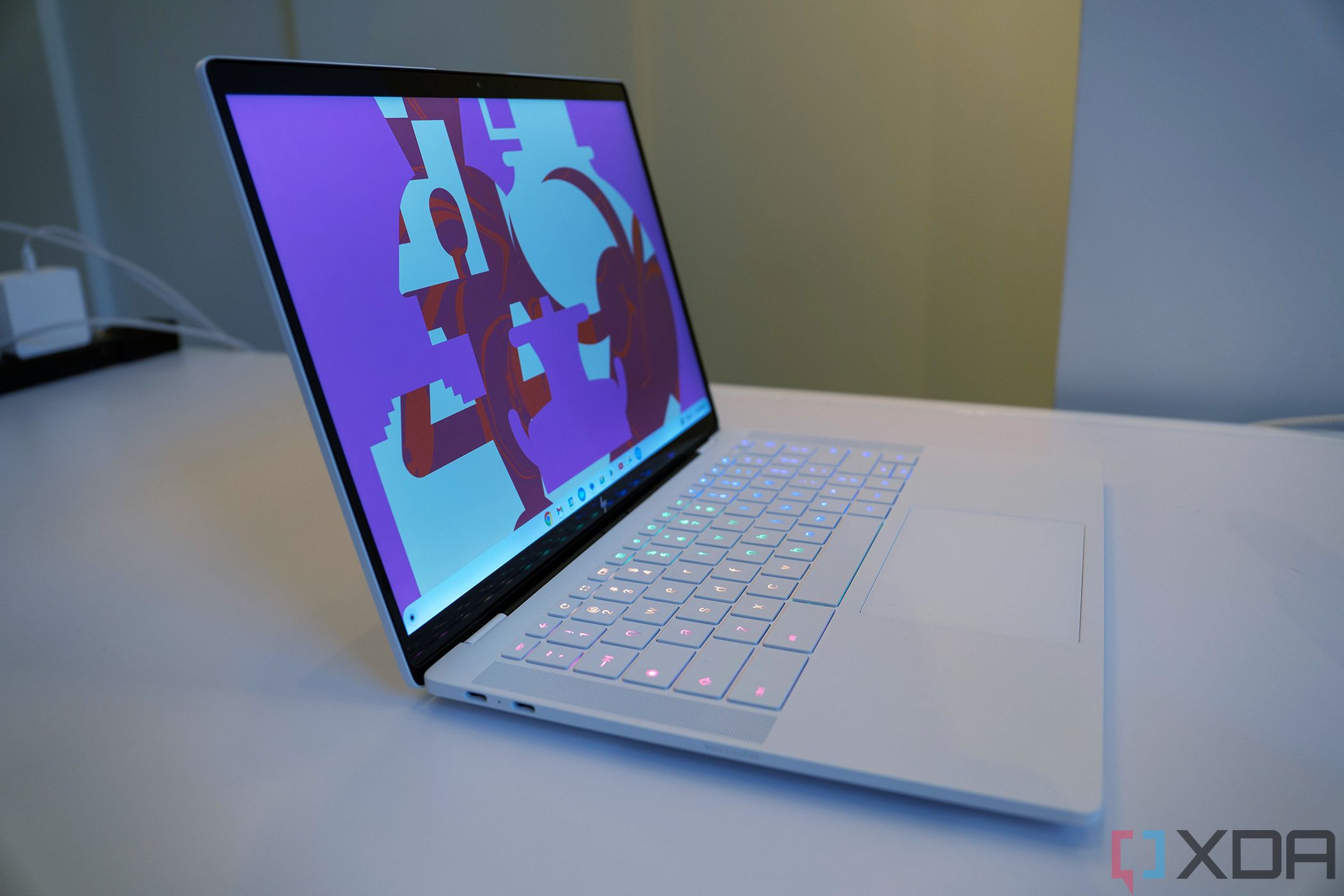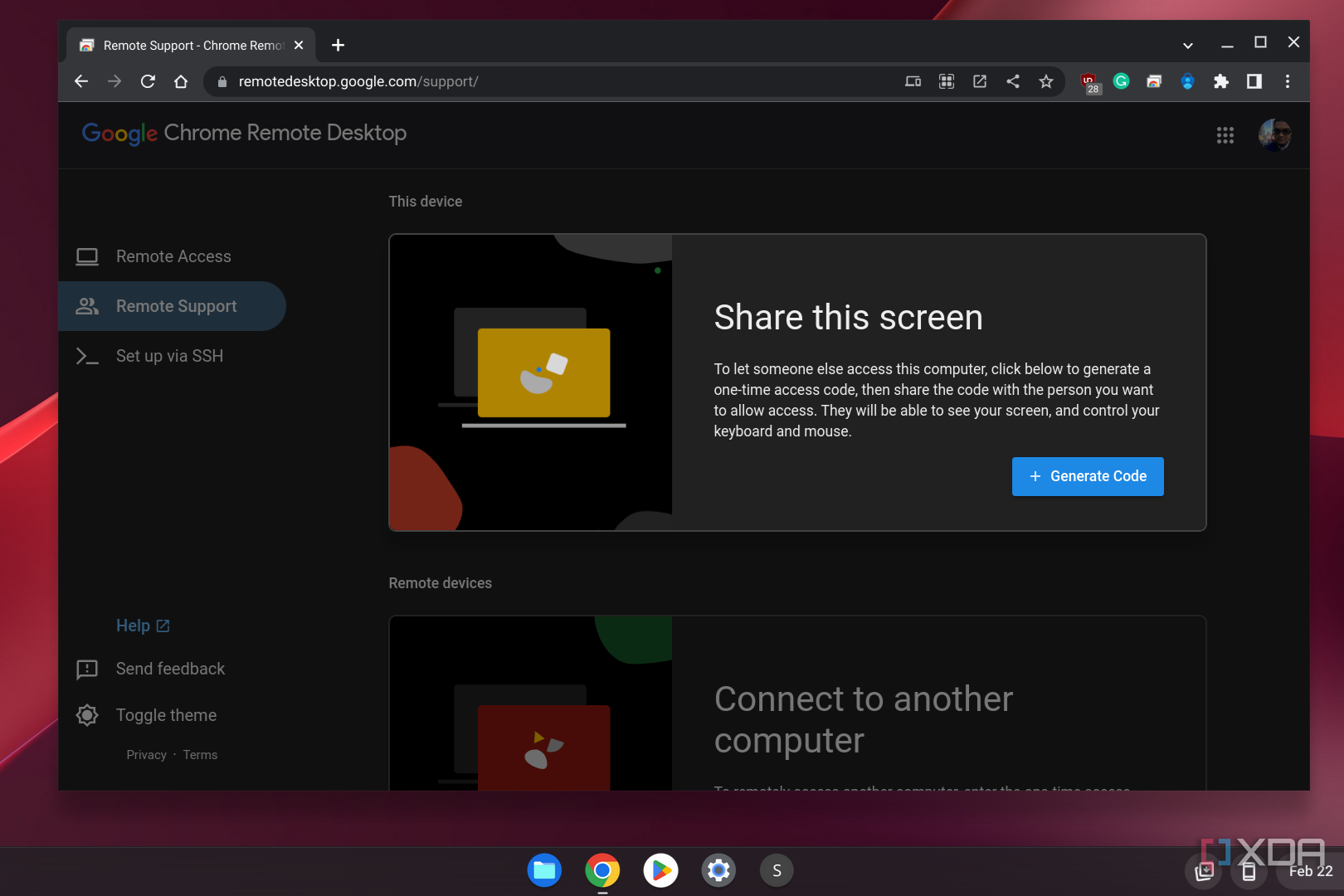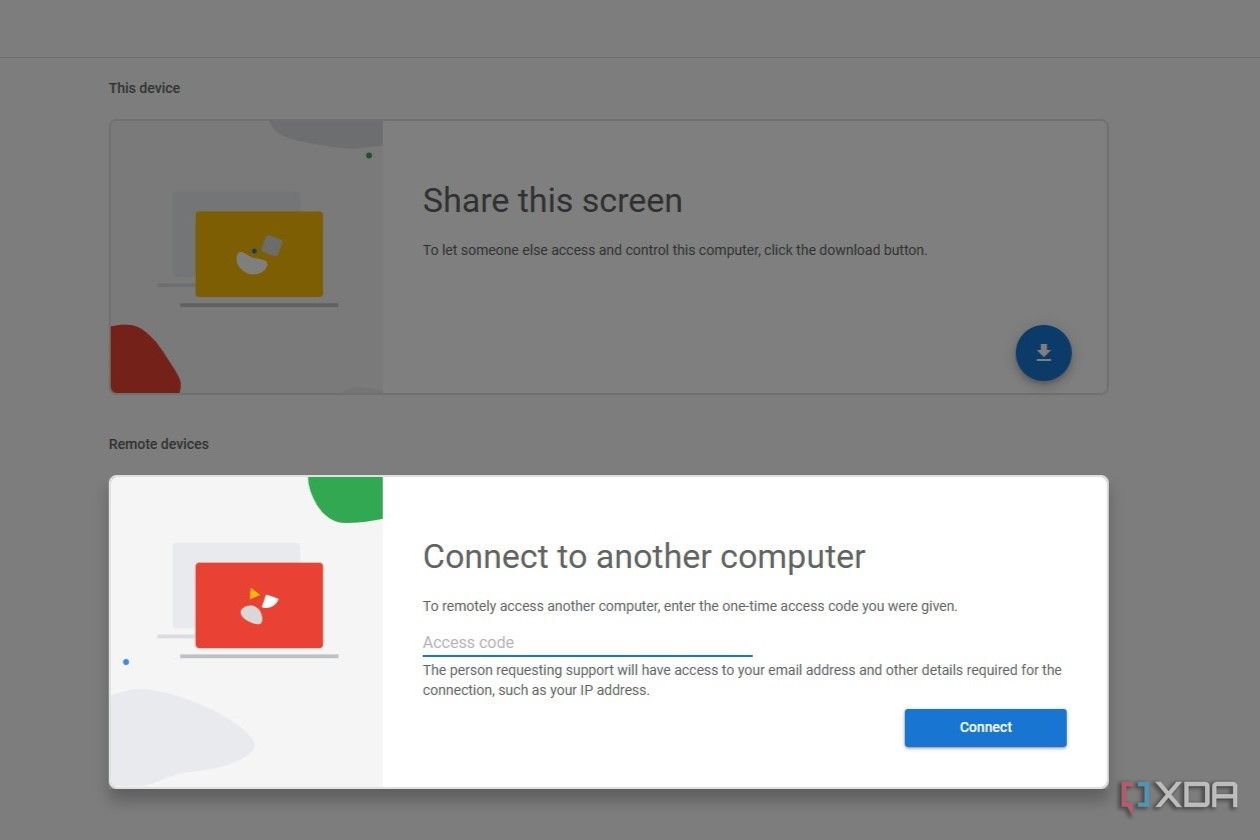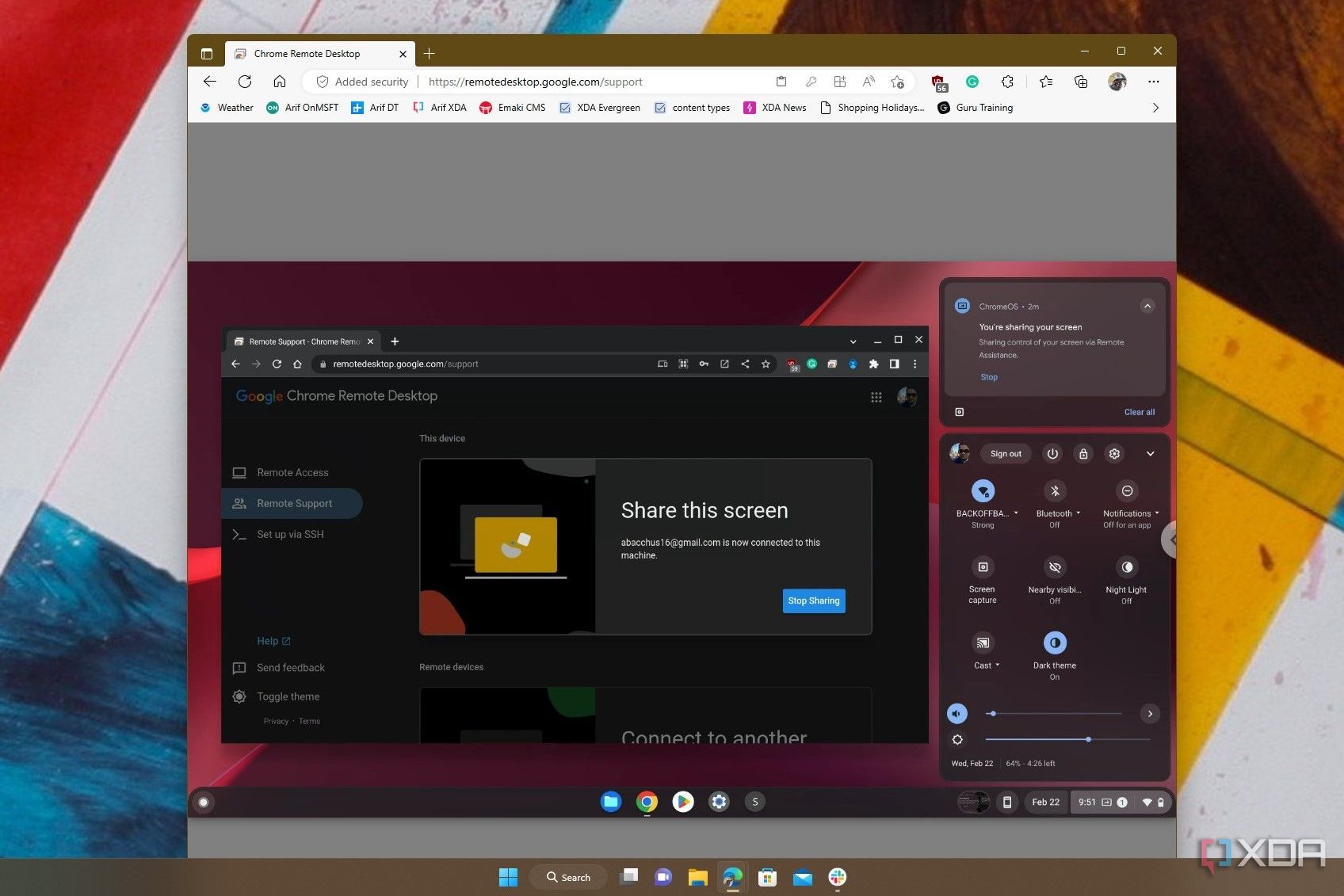Sometimes, you might need remote access to your Chromebook or ChromeOS tablet. It could be because you want to help a friend or family member diagnose an issue with the ChromeOS operating system or simply because you want to get access to a file or app on your Chromebook while it's not around. Unfortunately, it's not easy to access a Chromebook remotely.
While you can remotely access your Windows laptop or macOS system from a Chromebook, doing things the other way around and remotely accessing your Chromebook on a PC or Mac isn't something Google has talked about officially. A workaround is to use the Chrome Remote Desktop Share this screen function. We'll explain how to use it.
How to remote desktop into a Chromebook with Chrome Remote Desktop
To get started, you'll have to visit the Chrome Remote Desktop website on your Chromebook. This works best with Google Chrome, so make sure the browser is installed on whatever computer you're using to remote into your Chromebook.
When using this workaround, you'll always have to generate a code on your Chromebook first. Since your Chromebook will likely be in the room with you for this, this doesn't start off as a true hands-off remote experience.
- On your Chromebook, visit remotedesktop.google.com.
- Sign in with a Google Account or create one. You don't have to use the same one as your Chromebook.
- Click Remote Support in the sidebar.
-
Click + Generate Code under the Share this screen section.
- Note the code. You'll have five minutes to use it. If time runs out, click the Cancel button, and hit + Generate Code again.
- Open Google Chrome or a web browser on the computer you want to access your Chromebook on.
- Visit the Chrome Remote Desktop website.
- Choose Access my computer.
- Sign in with the same Google Account you used earlier on your Chromebook.
- Click Remote Support in the sidebar.
-
Choose Connect to another computer and enter the code displayed earlier on your Chromebook.
- On your Chromebook, in the popup that appears in the bottom right of your screen, choose Share.
-
Click Connect.
- To end the remote session, click the time area in your Chromebook system tray, and then click Stop at the top. You can also do this remotely.
That's it! You should now have remote access to your Chromebook on a web browser in Windows PC, Mac device, or any other operating system. This method gives you basic access to your Chromebook's screen, files, and clipboard. However, you won't be able to copy files between your Chromebook and the system you're using for remote access.
As we mentioned before, you'll also need to be in the same room with your Chromebook to begin this remote session, but the devices can be on different networks since Google's own servers handle the connection. We do hope that in the future, Google will integrate a true remote desktop solution for ChromeOS. Until then, this is the workaround you'll have to use.




